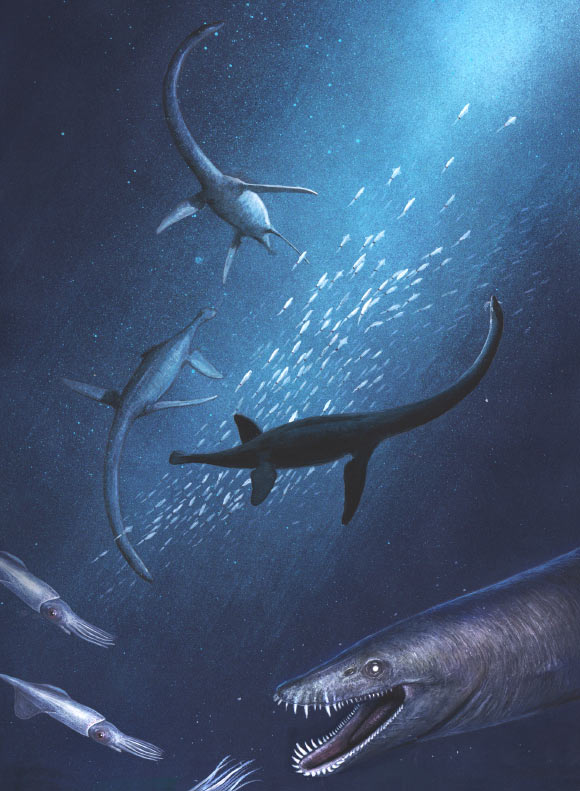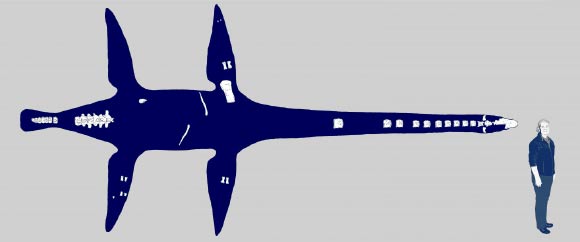In a study published Friday in the Journal of Vertebrate Paleontology, paleontologists report the discovery of a partially-preserved skeleton of one of the earliest known elasmosaurs, from the Early Cretaceous (130 million years ago) of Germany.
Elasmosaurs (Elasmosauridae) were a family of plesiosaurs that flourished during the Cretaceous period, about 145 million to 66 million years ago.
They were fully adapted to an aquatic lifestyle, and had a distinctive body plan comprising a streamlined body, paddle-like limbs and a very long neck with up to 75 individual vertebrae.
Named Lagenanectes richterae, the newly identified elasmosaur was 26 feet (8 m) long and inhabited a shallow sea around what is now Germany some 130 million years ago.
Private fossil collectors recovered the perfectly preserved bones of this ancient marine reptile (most of the skull, which had a meshwork of long fang-like teeth; vertebrae; ribs; and bones from the four flipper-like limbs) from an abandoned clay pit near Sarstedt in northern Germany in 1964.
Despite being discovered nearly half a century ago, Dr. Sven Sachs of the Natural History Museum in Bielefeld, Germany, and colleagues were only recently invited to study the specimen by the Lower Saxony State Museum.
“It was an honor to be asked to research the mysterious Sarstedt skeleton,” Dr. Sachs said.
“The jaws of Lagenanectes richterae had some especially unusual features,” said co-author Dr. Jahn Hornung, a paleontologist based in Hamburg, Germany.
“Its broad chin was expanded into a massive jutting crest, and its lower teeth stuck out sideways. These probably served to trap small fish and squid that were then swallowed whole.”
“Internal channels in the upper jaws of Lagenanectes richterae might have housed nerves linked to pressure receptors or electroreceptors on the outside of the snout that would have helped the reptile to locate its prey.”
“The bones also showed evidence of chronic bacterial infection suggesting that the animal had suffered from a long-term disease that perhaps eventually claimed its life.”
“The most important aspect of this marine reptile is that it is amongst the oldest of its kind,” said co-author Dr. Benjamin Kear, from the Museum of Evolution at Uppsala University in Sweden.
“It is one of the earliest elasmosaurs, an extremely successful group of globally distributed plesiosaurs that seem to have had their evolutionary origins in the seas that once inundated Western Europe.”
_____
S. Sachs et al. A new basal elasmosaurid (Sauropterygia: Plesiosauria) from the Lower Cretaceous of Germany. Journal of Vertebrate Paleontology, published online August 25, 2017; doi: 10.1080/02724634.2017.1301945









